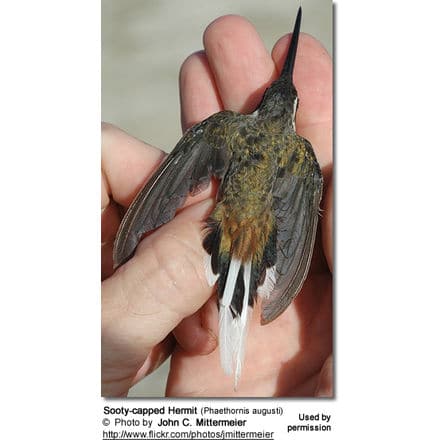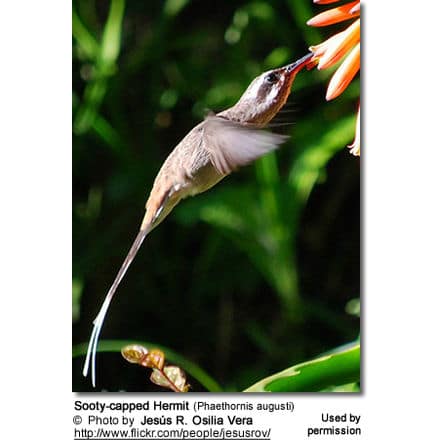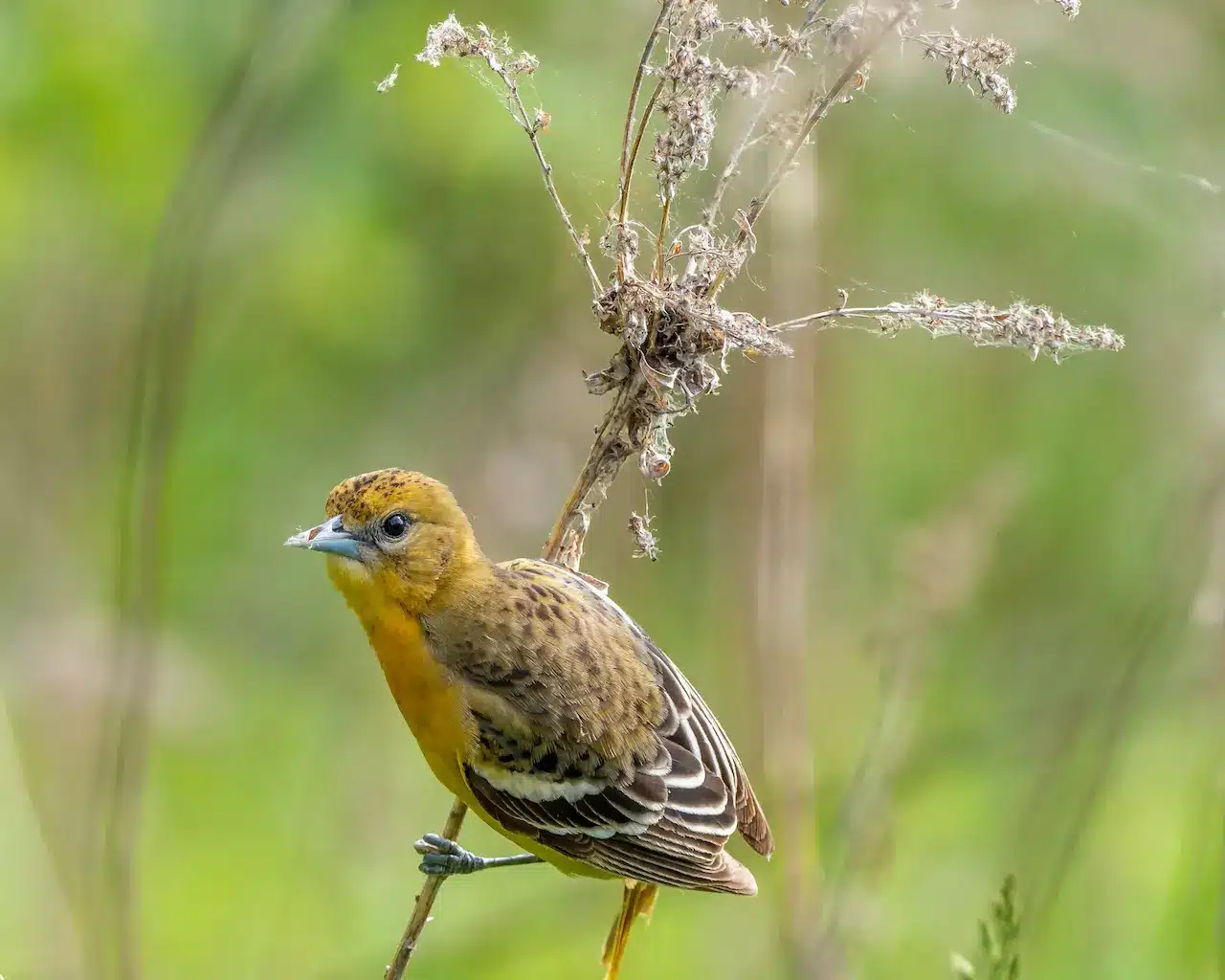Sooty-capped Hermits
The Sooty-capped Hermits (Phaethornis augusti) is a South American hummingbird that is endemic to Venezuela, Colombia, Guyana and Brazil.
Taxonomy, Subspecies and Distribution
The Sooty-capped Hermit is closely related and forms a superspecies with Planalto Hermit (Phaethornis pretrei).
-
- Phaethornis augusti augusti (Bourcier, 1847) – Nominate Race
- Range: Occurs in the eastern Andes and Macarena Mountains in Colombia, as well as coastal Cordillera in Venezuela
- Found in the Santa Marta Mountains in northern Colombia
- Range: Inhabits isolated mountains of southern Venezuela and western Guyana.
- Phaethornis augusti augusti (Bourcier, 1847) – Nominate Race
Probably invalid subspecies:
- Phaethornis augusti vicarius – Found in Colombia. They don’t differ from the nominate race and are assumed to be one and the same.
Description
The Sooty-capped Hermits is named for its sooty(blackish)-colored crown (top of the head).
It has a mostly brownish-rusty plumage with a hint of grey and green in some areas. The upper plumage is darker and has more of a bronze-greenish coloration. The chest and abdomen are a lighter buff color.
It has a long, slightly down-curved beak. The upper beak is black and the lower beak an orangey-red.
Its most striking features are the heavily white-tipped tail – the underside of the tail is mostly white as well. It has a white stripe from its eyes down to the neck and another white stripe from its beak down to its neck — both of which are enclosing a dusky face mask.
Males and females look alike.
Hummingbird Resources
- Hummingbird Information
- Hummingbird Amazing Facts
- Attracting Hummingbirds to Your Garden
- Hummingbird Species
- Feeding Hummingbirds
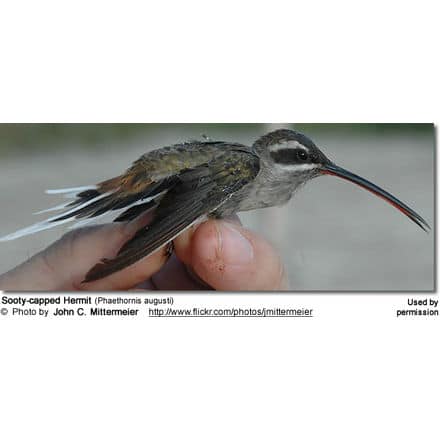
Nesting / Breeding
Hummingbirds in general are solitary and neither live nor migrate in flocks; and there is no pair bond for this species – the male’s only involvement in the reproductive process is the actual mating with the female.
During the breeding season, the males of many Hermit species form leks (= competitive mating displays) and congregate on traditional display grounds. Once a female enters their territory, they display for her. Their display may entail wiggling of their tails and singing. Willing females will enter the area for the purpose of choosing a male for mating. Oftentimes she will choose the best singer.
He will separate from the female immediately after copulation. One male may mate with several females. In all likelihood, the female will also mate with several males. The males do not participate in choosing the nest location, building the nest or raising the chicks.
The female Sooty-capped Hermit is responsible for building the remarkable cone-shaped nest which hangs by a single strong string of spiders’ silk and/or rootlets from some overhead support, which could be a branch or the underside of the broad leaves of, for example, Heliconia plants, banana trees or ferns about 3 – 6 ft (1 – 2 m) above ground. However, these unusual nests have been found beneath bridges, in highway culverts and even hanging from roofs inside dark buildings. The nest is often near a stream or waterfall. It is constructed out of plant fibers woven together and green moss on the outside for camouflage in a protected location. She lines the nest with soft plant fibers, animal hair and feather down, and strengthens the structure with spider webbing and other sticky material, giving it an elastic quality to allow it to stretch to double its size as the chicks grow and need more room.
The average clutch consists of two white eggs, which she incubates alone, while the male defends his territory and the flowers he feeds on. The young are born blind, immobile and without any down.
The female alone protects and feeds the chicks with regurgitated food (mostly partially-digested insects since nectar is an insufficient source of protein for the growing chicks). The female pushes the food down the chicks’ throats with her long bill directly into their stomachs.
As is the case with other hummingbird species, the chicks are brooded only the first week or two, and left alone even on cooler nights after about 12 days – probably due to the small nest size. The chicks leave the nest when they are about 20 days old.
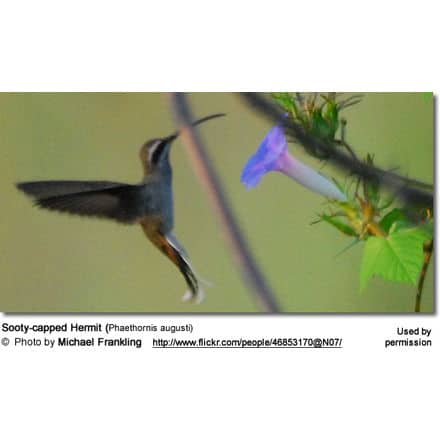
Diet / Feeding
The Sooty-capped Hermits primarily feed on nectar taken from a variety of brightly colored, scented small flowers of trees, herbs, shrubs, and epiphytes. They favor flowers with the highest sugar content (often red-colored and tubular-shaped).

